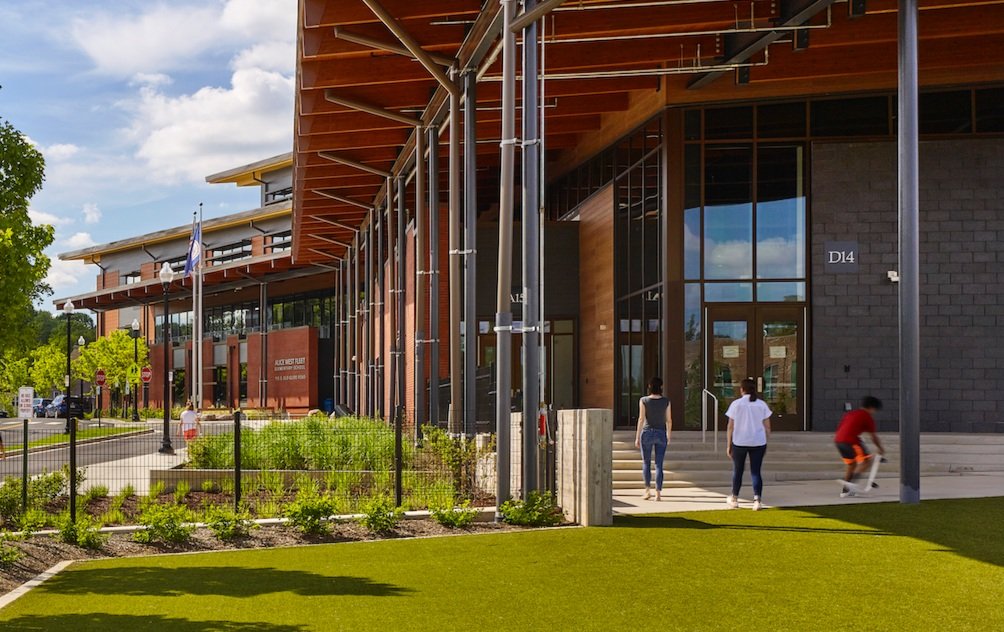
What clean energy technologies does the Inflation Reduction Act support?
KEY FEATURES:
Provides on-site, reliable, clean energy at a low, fixed price
Can dramatically reduce energy costs especially in high-cost electricity markets
Works in all climates but may be more challenging to site at urban districts with limited space
1 in 10 schools have already gone solar
KEY FEATURES:
Can reduce utility costs (e.g. peak shaving, demand charges) and generate revenue through auxiliary grid services
Can be used for back-up power to enhance community resilience
KEY FEATURES:
Moves heat that already exists (no combustion)
200-600% efficient (vs. 99% high efficiency boiler)
Heats and cools with one set of equipment
Works in a wide variety of climates where heating and cooling loads roughly balance
KEY FEATURES:
Reduces exposure to harmful air pollutants for students and for communities in which buses operate
Saves ~$100,000 in lifetime fuel and maintenance per bus, compared to diesel
Protects school budgets from volatile fossil fuel prices
Produce less than half the carbon pollution of propane or diesel buses — and those emissions will only decrease as the grid decarbonizes
Quieter, calmer rides for drivers and students — another tool to recruit drivers!
KEY FEATURES:
Facilitates charging of electric buses and other district fleet vehicles
Provides staff and visitors with access to charging for electric passenger vehicles
Contributes to growing the infrastructure communities need to speed the transition to electric vehicles
Can support resilience and emergency preparedness goals via vehicle-to-building and vehicle-to-grid applications
KEY FEATURES:
Reduces energy and power costs of interior lighting, HVAC, and hot water systems so that more resources can be devoted to the educational mission
Improves comfort of buildings by reducing air infiltration and leakage
Improves health of indoor air by ensuring that air entering the building can be filtered for air pollutants such as wildfire smoke
To qualify, the building needs to demonstrate a reduction in energy of at least 25% in comparison to a building meeting minimum requirements of ASHRAE Standard 90.1. Savings must be calculated through qualified computer software.
Do you have a project that will leverage incentives from the Inflation Reduction Act? We want to know. Tell us about it here.
Click below to return to Schools and the Inflation Reduction Act landing page











































